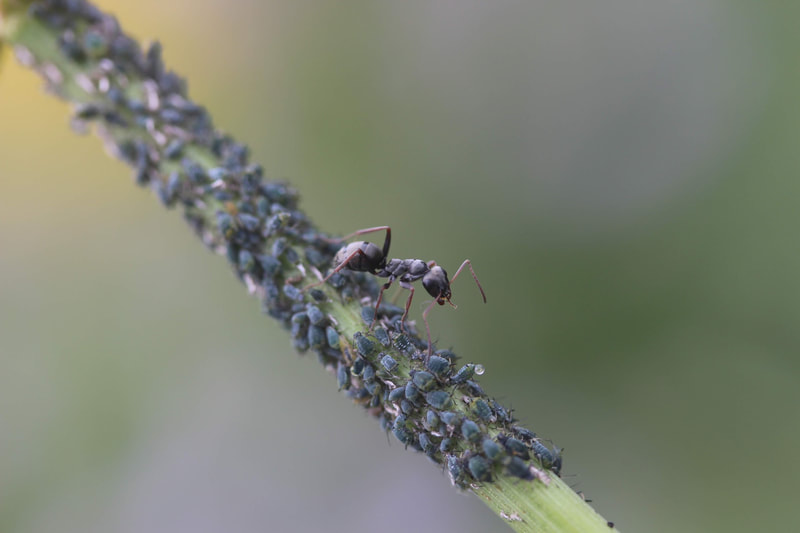How do ant-hemipteran mutualisms and multi-trophic interactions respond to climate change?
|
Ant-hemipteran mutualisms are classic examples of food-for-protection mutualisms. In these interactions, ants protect herbivorous sap-feeding hemipteran insects, such as aphids and whiteflies, against predators and parasitoids. In exchange, hemipterans excrete a sugary reward called "honeydew" that the ants consume. These mutualisms are common within many ecosystems, involve dozens to hundreds of ant and hemipteran species, and can have widespread ecological effects, making them considered by some to be "keystone interactions." Because the outcomes of these interactions depend strongly on the surrounding ecological context, they are great systems for asking questions about the causes and consequences of variation in mutualisms and multi-trophic interactions, as outlined in our recent annual review of this topic.
Much of my work focuses on documenting the effects of climate change on ant-hemipteran mutualisms and multi-trophic food webs. Through experimental manipulations of ant-aphid multi-trophic interactions across several natural climatic gradients, I have found that shifts in mutualist ant activity in response to changes in temperature and aridity drive shifts in aphid herbivore performance. In the Rocky Mountains in Colorado, I found that the interaction shifts from neutral (no benefit to aphids) in colder climates to mutualism (positive effect on aphid abundance) in warmer climates. Relevant publications: |
What is the role of partner diversity in maintaining mutualism functioning?
In another set of studies, I am currently examining the role of ant biodiversity in shaping the fitness of hemipteran mutualists. Theory predicts that mutualisms should evolve to be highly specialized, one-to-one interactions. Yet, most mutualisms are not highly specialized but instead involve diverse networks of interacting partners. To understand why mutualisms are so diverse, as well as the consequences of that diversity for mutualism function, I conduct observational field experiments and construct demographic models. I have found that competition among ants determines when and which mutualist aphids the ants associate with, and trade-offs among ants in their abilities to discover versus defend resources against competitors help maintain ant biodiversity within ecological communities. Moreover, I have found that biodiversity in mutualist ant partners is essential for maintaining mutualism functioning, as ant species provide complementary benefits to aphids. As a result, aphid colony fitness and population growth are higher in more biodiverse ant communities. Two manuscripts based on this work are currently in preparation, and I plan to further expand this work to include comparisons across additional ant and hemipteran communities.





